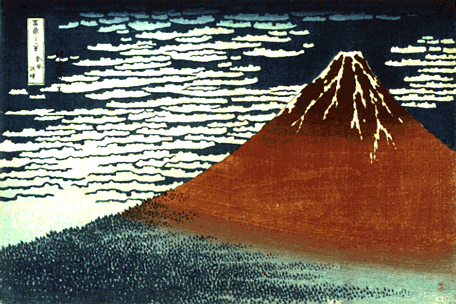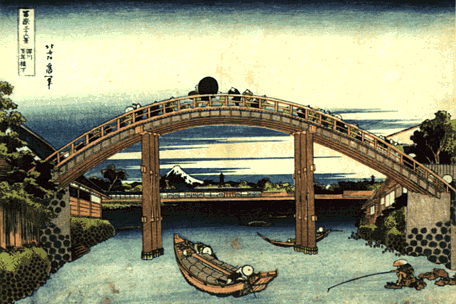Katsushika Hokusai
(1760-1849)
Katsushika Hokusai was active in many
different fields, including yakusha-e and book illustrations.
He also learned Chinese and Western art techniques and blended them
into his ukiyo-e works. In the early 1820s, when Hokusai
was already in his sixties, the first of his famous 46-piece series
depicting Mt. Fuji, Fugaku Sanjurokkei (Thirty-Six Views
of Mount Fuji), was published. This series made Hokusai famous for his
dynamic composition and beautiful use of colors and elevated landscape
prints into an established genre of ukiyo-e.
|
|
 |
Fugaku Sanjurokkei:
Gaifu Kaisei (Thirty-Six Views of Mt. Fuji: Pleasant Winds,
Fine Weather)
This print, dynamically depicting Mt. Fuji glowing in the morning
light, is one of Hokusai's representative landscape prints.
|
Fugaku Sanjurokkei:
Fukagawa Mannenbashi Shita (Thirty-Six Views of Mt. Fuji:
Under the Fukagawa Mannen Bridge)
Mt. Fuji can be seen in the distance underneath the arched bridge.
Hokusai was skilled at unusual compositions like this. |
 |
|
|
Shiika Shashinkyo: Sei Shonagon
(Realistic Impressions of Poetry: Sei Shonagon)
This is one of a series illustrating famous poems that were
taught as an academic subject at the time. It depicts a scene
from a Chinese story that appears in a poem by Sei Shonagon,
a famous woman writer who lived around the late tenth century.
The man in the tree, knowing that the gates will not be opened
until morning, is crying like a rooster to make the gatekeepers
think that morning has come.
|
|